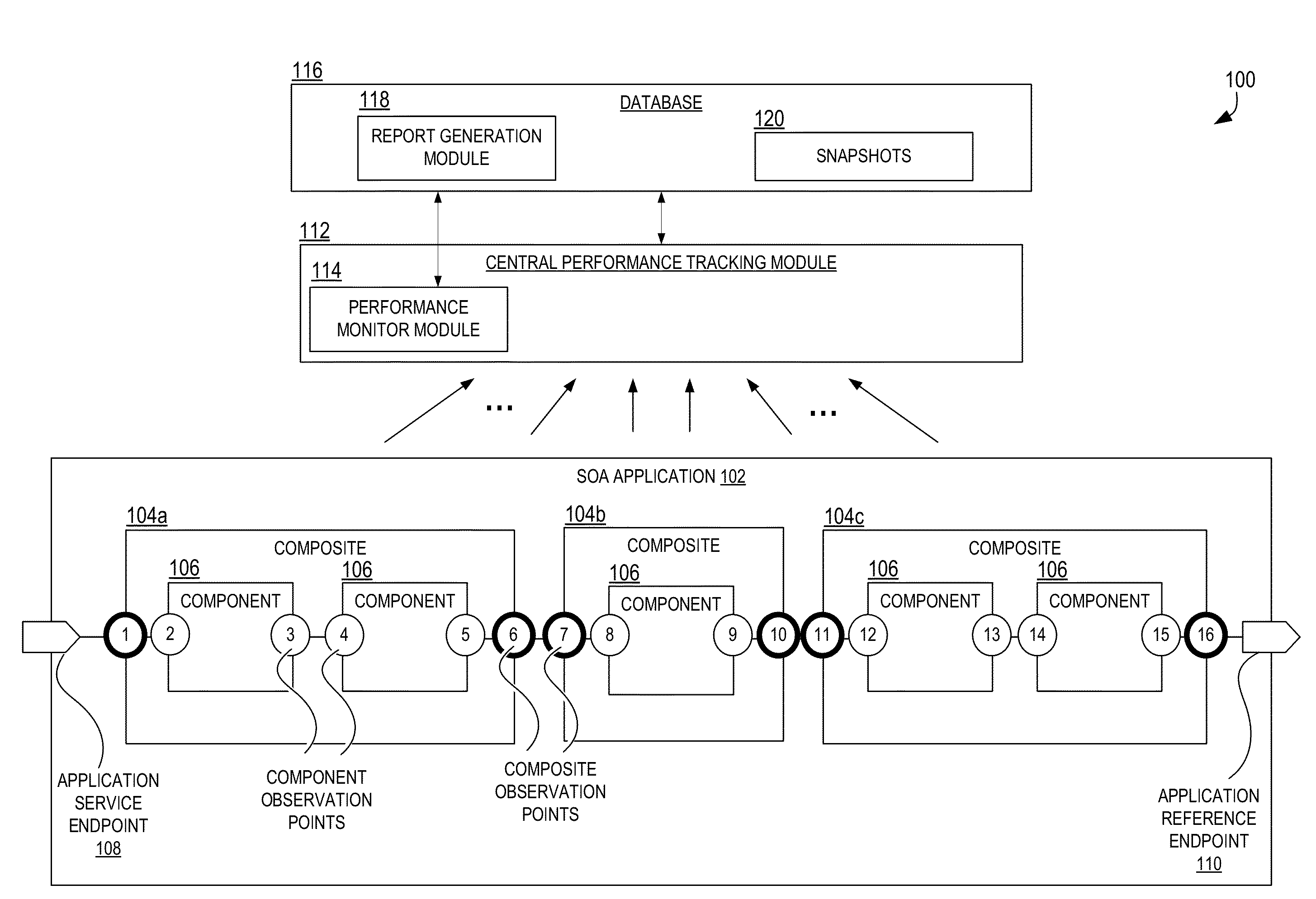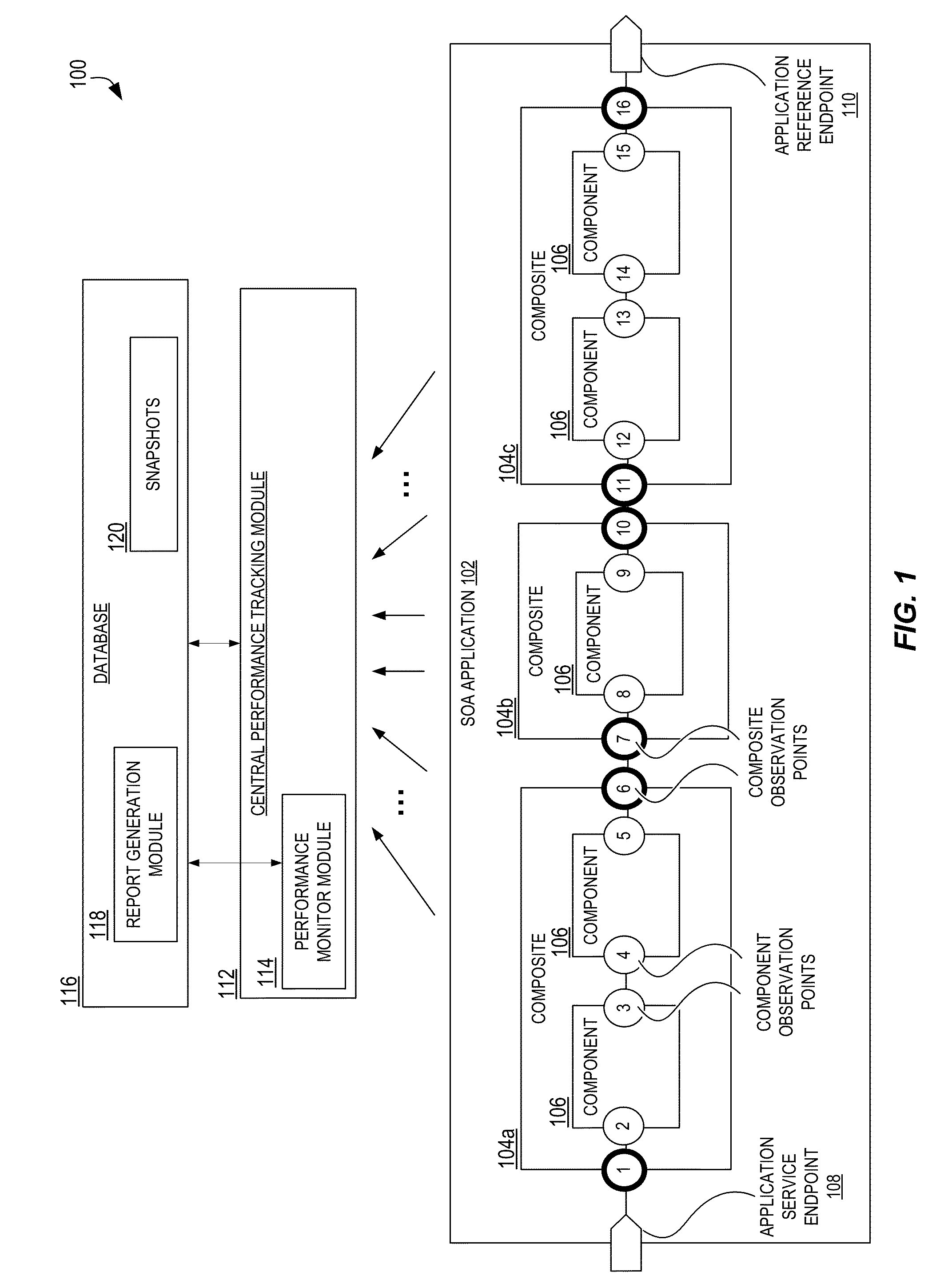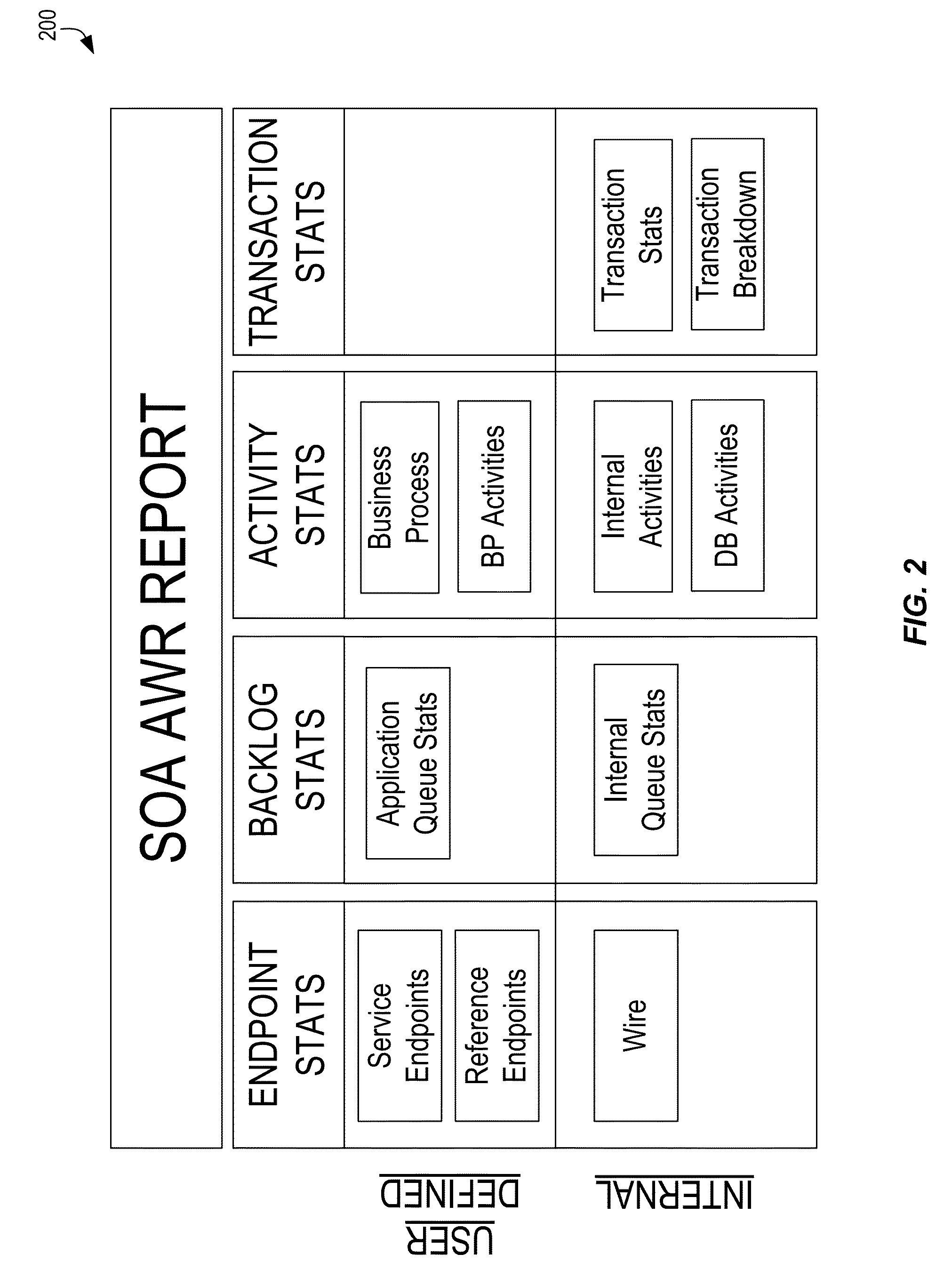Performance analysis and bottleneck detection in service-oriented applications
a performance analysis and service-oriented technology, applied in the field of computing systems, can solve the problems of increasing software complexity, unable to manage these applications, and so on, and achieve the effect of increasing execution priority
- Summary
- Abstract
- Description
- Claims
- Application Information
AI Technical Summary
Benefits of technology
Problems solved by technology
Method used
Image
Examples
Embodiment Construction
[0030]In the following description, for the purposes of explanation, specific details are set forth in order to provide a thorough understanding of embodiments of the invention. However, it will be apparent that various embodiments may be practiced without these specific details. The figures and description are not intended to be restrictive.
[0031]Diagnosing performance and scalability issues in SOA applications may be difficult, as the ultimate performance of a SOA system may be dependent on a number of factors. SOA systems pose particular challenges since large installations often involve interactions between partners and services (both internal and external), stateful and stateless components, synchronous and asynchronous communications, and / or deployment over multi-domain clusters, etc.
[0032]There are many different potential causes for performance / scalability issues in SOA applications. For example, a SOA system may suffer due to a persistent or temporary lack of computing reso...
PUM
 Login to View More
Login to View More Abstract
Description
Claims
Application Information
 Login to View More
Login to View More - R&D
- Intellectual Property
- Life Sciences
- Materials
- Tech Scout
- Unparalleled Data Quality
- Higher Quality Content
- 60% Fewer Hallucinations
Browse by: Latest US Patents, China's latest patents, Technical Efficacy Thesaurus, Application Domain, Technology Topic, Popular Technical Reports.
© 2025 PatSnap. All rights reserved.Legal|Privacy policy|Modern Slavery Act Transparency Statement|Sitemap|About US| Contact US: help@patsnap.com



